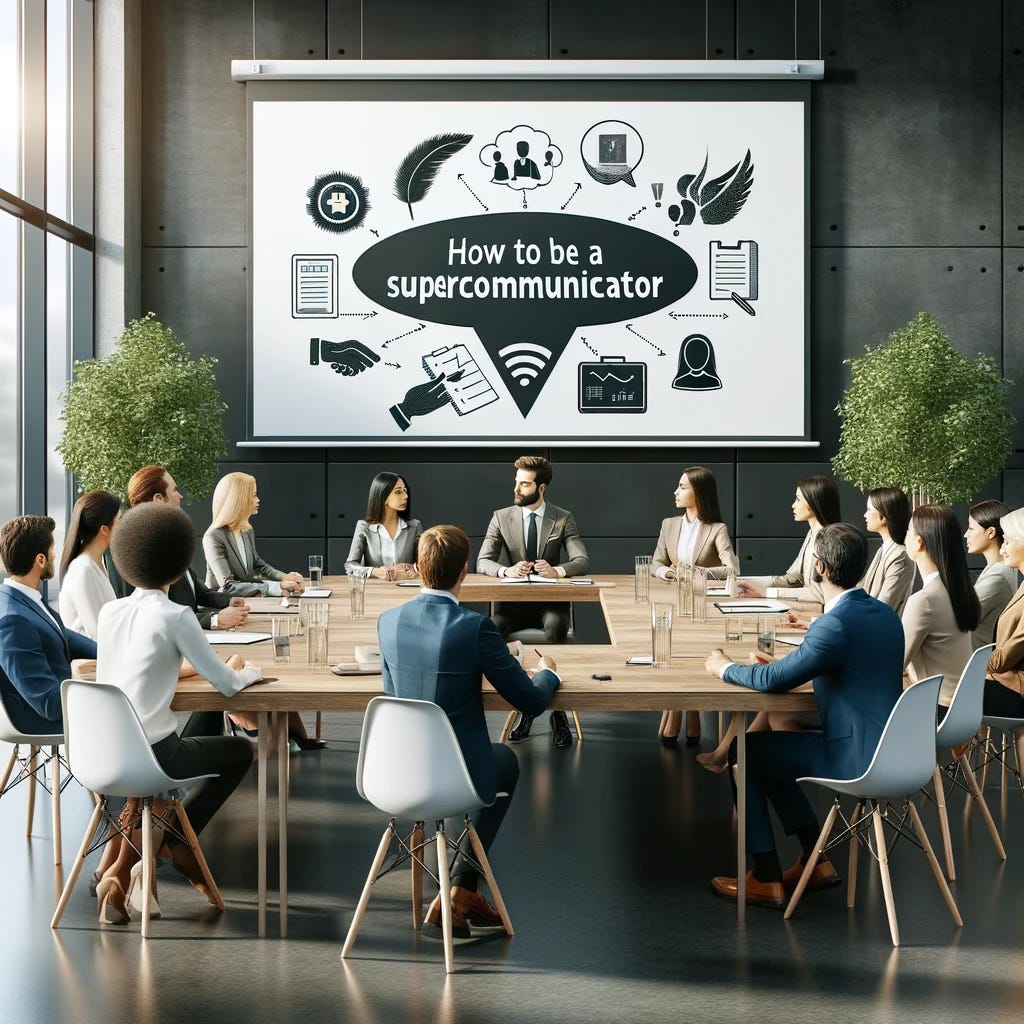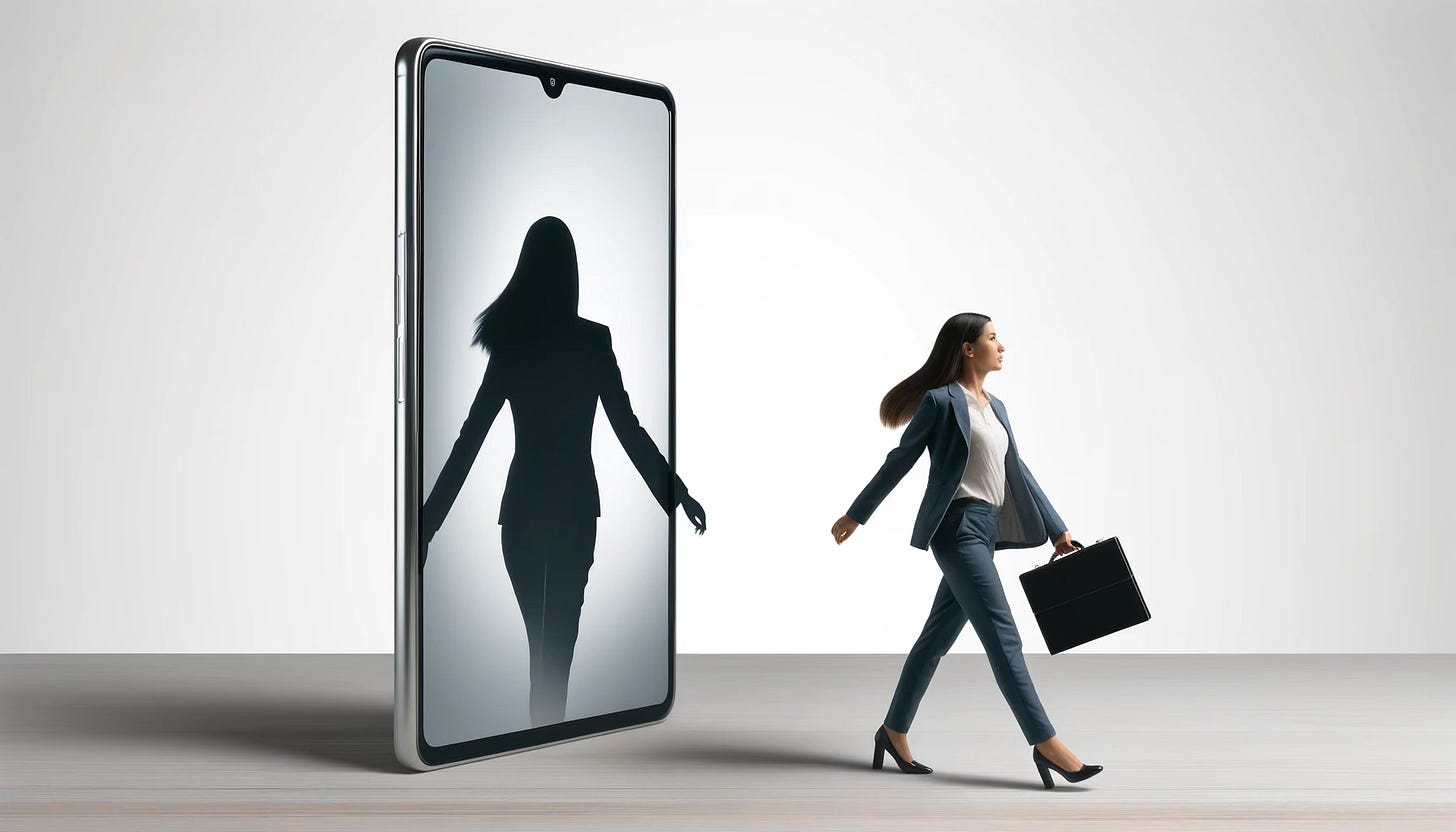Mastering Communication, Learning from Errors, and Winning Back Focus
This week’s TL;dr explores transformative strategies for effective communication, the benefits of learning through mistakes, and techniques for regaining attention in the digital age
One of the many blessings I enjoyed in my career in local government were leaders who valued ongoing education. Not just for enhancing professional skills, but for improving emotional intelligence as well. You need healthy doses of both to build and maintain high performing organizations. Learning about personality types made me realize the engineers weren’t purposely trying to drive me crazy with their rigidity — and hopefully they came to understand my emphasis on values and effective citizen engagement wasn’t meant to question their professional expertise. This mutual understanding led to more respectful and productive discussions, and enhanced our project outcomes when citizens better understood controversial projects and knew their voices had been heard.
In that spirit, today’s TL;dr shares a trio of insightful articles that explore potent strategies for enhancing memory, attention, and communication. Gather ’round. Class is in session.
How to Become a ‘Supercommunicator’
“We can all learn the techniques for saying the right thing and connecting with others. The key is to make sure you’re having the same sort of conversation as the person you’re trying to reach.” Thus begins a Charles Duhigg article in the Wall Street Journal that explores the concept that effective communication is not inherent but a skill that can be learned and refined. In the essay, adapted from his recently published book,1 Duhigg argues anyone can enhance their communication skills to connect more effectively with people across different settings. Here are four keys:
Matching Conversation Styles: Recognizing and matching the type of conversation (practical, emotional, social) the other person is seeking is key to effective communication. Understanding what each party wants out of the conversation can lead to more meaningful and synchronized exchanges. Duhigg shares a personal example: “When I start complaining, my wife will often ask ‘Do you want me to help you solve this problem, or just listen?’ That helps us become aligned—or, in the words of neuroscientist Uri Hasson at Princeton University, ‘neurally entrained.’”
Asking Deep Questions: Engaging others with deep, personal questions can facilitate better understanding and build trust. This approach encourages open sharing and can foster closer connections by aligning the vulnerability between conversational partners. “Ask something that invites someone to talk about their values, beliefs or experiences,” Duhigg writes “Deep questions are powerful because they invite us to share something authentic and potentially vulnerable.” He quotes Harvard researcher Amit Goldenberg: “Vulnerability is one of our loudest emotions. We’re hardwired to notice it.”
Showing Active Listening: This strategy highlights the necessity of demonstrating active listening by reflecting on what has been said and clarifying it, thereby building trust, and ensuring mutual understanding in conversations. “To prove we’re listening, we need to show it,” Duhigg says. There’s a technique called “looping for understanding” that involves repeating what the other person said in your own words. “Then—this is important—ask if you got it right.”
Pay Attention to Body Language: Effective communication extends beyond spoken words to include nonverbal cues such as body language, facial expressions, and tone of voice. Recognizing these subtle signals is crucial for understanding others’ true emotions and intentions. “Words, tones, postures, gestures and facial expressions ... can be a gold mine of information,” says NASA psychiatrist Terence McGuire, who created a test for astronauts which emphasized the ability to interpret and respond to nonverbal cues, highlighting their importance in high-stakes environments.
Which of these techniques have you used effectively in your conversations? Share in the comments.
Want to Remember More? Make More Mistakes
Neuroscientist Charan Ranganath explores the concept of error-driven learning, a process where making mistakes while learning is not only inevitable but beneficial for memory retenton in an essay for the WSJ. Contrast that with traditional rote memorization, particularly in educational contexts where students are often encouraged to avoid errors. Ranganath cites research demonstrating that actively testing oneself and engaging in trial and error can significantly enhance the long-term retention of information.
The Importance of Making Mistakes in Learning: Humble yourself to the necessity of embracing mistakes as a crucial part of the learning process. “Whether we are trying to master a new language or play a musical instrument, the pain of making mistakes is a big obstacle, especially early in the learning curve,” Ranganath writes. “But novices become experts only when we push ourselves to the edge of our abilities, and errors are both inevitable and essential for moving forward.”
Testing as a Superior Learning Tool: Quit re-reading and begin testing yourself instead, Ranganath says, citing research that shows students who repeatedly studied remembered around 40% of what they had learned, on average, while those who tested themselves recalled over 60%. “It turns out that giving your brain a chance to struggle first will help you learn and keep more information over time,” he writes.
Neuroscientific Basis for Error-Driven Learning: Research shows the act of attempting to retrieve information and making mistakes activates a feedback loop in the brain that strengthens correct connections and prunes the incorrect ones, leading to more robust memory retention. “The human brain can learn and retain far more through trial and error than from rote memorization,” Ranganath writes.
I know first responders use this approach when doing scenario training. You want mistakes to be made when firing blanks at the training facility — with instructors giving immediate feedback — rather than out in the field. In communications, we use a variation on this idea when a department wants its own social media account. A best practice is to have them work up a post per day for a month — offline — to see if they have the ability to generate enough content to sustain a stand-alone account. It’s a learning experience for all involved.
How I Got My Attention Span Back
Reporter Katherine Bindley relates a personal experiment in disconnecting from digital distractions by giving up all scrollable, swipeable, and refreshable forms of technology — for Lent. “I also gave up my TV,” she writes. “I figured it, too, is a screen and God would appreciate the sacrifice.” She aimed to reclaim her dwindling attention span, a common casualty of the digital age. It worked spectacularly in the short-term; it’ll take more work to retain the benefits.
Recognition of the Problem: Bindley notes the negative impact of smartphones and applications on our cognitive functions, particularly attention spans. “Research shows our attention spans have been shrinking over time,” she writes. “In 2004, we could stay focused on a screen for 150 seconds on average. In 2012, we were down to 75 seconds. Between 2016 and 2020, it had fallen to an average of 47 seconds.”
Benefits of Digital Detox: Results of the 40-day digital fast were “astounding,” she writes. “I got better sleep. I was more productive at work. My brain felt calmer with all the reading and writing I did.” She began journaling and started working on her dream of writing a children’s books series. Limiting blue light exposure meant she went to bed earlier — and woke up rarin’ to go. “I became one of those people who wakes up in earnest at 5 a.m., fires off a bunch of work emails then goes for a run or a swim in the bay.”
And Then Came the Relapse: “I woke up early on Easter like it was Christmas and binged on all my apps. For the rest of the day, I felt like I’d had too many espressos.” Bindley’s experiment was a like a crash diet: effective but fleeting. Her old habits returned in about a month. She’s working to adopt longer-term strategies like keeping her phone in a different room while she works as well as using a physical barrier, like a rubber band wrapped around her phone, to make her pause before mindlessly checking on social media apps.
Maintaining attention is something I struggle with as well. Bindley got help from Catherine Price, author of a book2 and an online course titled “How to Break Up With Your Phone.” I can personally recommend Johann Hari’s book, Stolen Focus: Why You Can’t Pay Attention — and How to Think Deeply Again.3 Have you ever taken the plunge?
If you answered yes, share your experience in the comments. GGF readers would love to know how it went and any lessons learned.
In Other’s Words
We return again this week to the wisdom of Marcus Aurelius, Roman emperor and Stoic. Take this to heart if you suffer from an unhealthy relationship with social media.
You always have the option of having no opinion. There is never any need to get worked up or to trouble your soul about things you can’t control. These things are not asking to be judged by you. Leave them alone.
We return as well to author James Clear for another valuable nugget, this one a simple recipe for finding opportunities.
Be pleasant
Ask questions
Engage daily
It’s hard for a warm and pleasant person who is asking a lot of questions and engaging in their industry daily to not come across interesting opportunities.
From the Best Advice My Boss Ever Gave me file, we have this from Adam Savage, special effects designer and co-star of the TV show Mythbusters, which ran from 2003 to 2016 on the Discovery Channel.
Back when I was a young model maker, my boss and I were bidding on a prop build for an indecisive client. After six rounds of communication, we still didn’t know enough to make our bid. My boss told me to tell the client we got another gig and couldn’t take the job. ‘When the client is difficult before you’ve even agreed to work with them, they’re going to be a nightmare,’ he said. I’ve found that holds true.
Onward and Upward.
Paid link. As an Amazon associate, I earn from qualifying purchases.
Ibid
Ibid








One of my favorite "new-to-me" tools for managing digital time sucks is an app called One Sec. It provides attention interrupters to help you manage how much time you spend mindlessly on social, as well as as a pause before you log into platforms. Give it a try! It's had such an impact on my app use that I've committed to the paid version.
Going to the paid version is quite the endorsement! I’ll definitely look into that one. Thanks for sharing, Shannah!